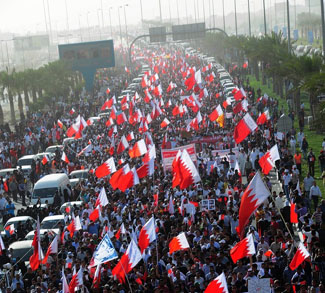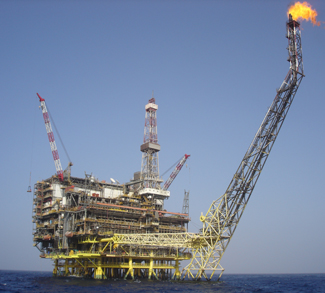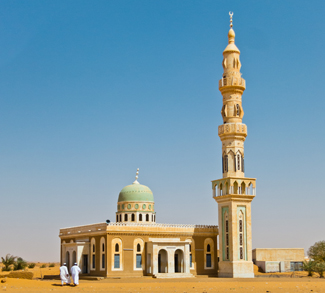It has been almost three years since, on December 17, 2010; Tunisian street vendor Mohamed Bouazizi set himself on fire to protest the authorities’ indifference and arrogance in the face of economic hardship. His gesture sparked the Jasmine Revolution, which promptly spread to the entire Arab world in a wave of protests, riots and revolutions that have come to be known as the ‘Arab Spring’ or sometimes the ‘Arab Awakening.’ However, what has really changed since that fateful event in 2010; indeed, was it even so ‘fateful’? The mainstream view would suggest that the political and economic development of the Arab world has experienced profound changes, but while a few more years will be needed before the meaning of the Arab Spring becomes clearer, there are already clear indications that in actual ‘result,’ the population at large may have suffered more than it has gained. Surely, from the political standpoint, four regimens were toppled (Tunisia, Egypt, Yemen, Libya), many governments have experienced changes and problems (Bahrain, Kuwait, Lebanon, Oman, Jordan), three civil wars have erupted (Libya, Bahrain, Syria) and four states have changed, or have been in the process of changing their constitutions (Egypt, Tunisia, Morocco, Jordan). Meanwhile, the protests and riots continue throughout North Africa and the Middle East, with the exception of Qatar and the United Arab Emirates (Saudi Arabia has also seen increased protests from the Shiite minority in the northeastern regions), though without any gains for those who protest.
There was a sense that a true revolution was about to begin, a revolution that would provide more economic opportunities and upward mobility for many people. Rather, what is actually emerging is not only a growing ideological disparity between Islamists and secularists, but an even greater economic disparity on both the national and regional level. The collapse of the Arab dictatorships in Tunisia, Egypt, Libya; the insurgencies in Syria, Yemen and Bahrain and its repercussions felt all over the Arabian Peninsula and North Africa have not produced a true alternative system. They may not even have produced a better alternative. The ideological division has shifted the people’s focus away from addressing real problems- the issues at the very heart of the revolts in the first place such as education, the economy and corruption. This includes the secularists, who have lived shielded from the problems faced by the poor, and the Islamists, who tend to avoid the topic of actual governance in favor of a concept of society inspired by idealized notions of outward displays of ‘morality.’ In other words, little has changed; the two camps are ever more divided while only the referees seem different. In Egypt, the military is still in charge. In Tunisia, the Ennahda party that won the elections has spoken of establishing a ‘Caliphate,’ In Libya, Islamist movements, repressed under the Qadhafi regime, have risen to the fore with an appetite for revenge, while hundreds of militias are able to roam blissfully free as the central authorities have no power to stop them, even as they seize control of oil terminals, reducing Libya’s oil exports to a seventh of what they had been under Qadhafi. Meanwhile, in Syria, the winds so-called ‘spring’ are blowing the seeds of more division between Shiites and Sunnis, between Iran and the West, and between the emerging powers of Russia and China with the United States and Europe. Even if the Baathist regime falls, and at present, this is still unlikely- what would replace it?
From the economic point of view, meanwhile, nothing has changed. Arab economies are generally classified into two categories depending on whether or not they produce oil and/or gas. The oil exporters are typically richer and the performance of their economies is closely linked to the price of crude oil. Those that do not are defined ‘oil importers.’ This adds to the social, economic and regional divide. There is a vast spread between the inhabitants and their GDP per capita, depending on which of the preceding groups applies to their country. Indeed, the two groups have drifted ever further as the oil-exporters have benefited from an increase in crude oil prices and continued to grow at high rates (on average 6.5% according to the IMF) despite the regional context of political instability and an unfavorable global economic climate (except for Libya, whose socio-political fragmentation carries a cost). Though certain oil exporters like Libya suffered major setbacks, oil-importing countries on a whole saw stagnant economies in 2011 and 2012, with little signs of progress in 2013. Governments have managed to maintain a certain macroeconomic stability, but state budgets and trade balances have deteriorated. Political instability, the rising price of oil and necessities, the collapse of tourism, the deterioration of economic relations with foreign partners – especially with a crisis-ridden Europe – combined with weakness in the world economy to produce an average growth of 2% in 2012.
In the 2012 Regional Economic Outlook, the International Monetary Fund devised a new sub-group of economies in the region to reflect the ‘Spring’: Arab Countries in Transition (ACTs). The Arab countries in transition are those in which the effects of the Arab Spring have been more disruptive, producing a period of political transition. They include Egypt, Libya, Tunisia and Yemen, whose regimes have been reversed. Jordan and Morocco, both monarchies marked by constitutional reforms, have also been included in the ACT group. These countries are the ones that were affected by the revolutionary wave of 2011, and whose economies are going through a phase of contraction, exhibiting macroeconomic weakness. Libya fits into neither group. In 2011, during the main phase of the revolt, its GDP fell by 60% only to recover 122% in 2012. The initial recovery was related to the fact that Libya, as oil exporting country, was able to resume production to pre-revolt levels in the first months after the revolt, rising to 1.52 million barrels per day in 2012 after falling to 166,000 in 2011. However, in 2013, many oil companies left Libya due to increasing insecurity and instability, and Libya cannot extract oil without foreign technical expertise. Meanwhile, the GDPs of Egypt, Tunisia and Yemen have fallen dramatically, while those of Jordan and Morocco have remained more stable although stagnant. The IMF expects that the path to long-term growth will resume in just 4 or 5 years.
The socio-economic problems for the population will be compounded, as structural reforms are needed to avoid new crises and to correct issues that have plagued the region for years. Ideally, Arab countries will aim to generate a more inclusive growth, which is necessary to combat the problem of economic inequality and reduce structural unemployment that has afflicted the region for years. Yet, the risk remains that structural reforms will fuel more social protests as subsidies for basic goods and services will inevitably be lifted in the face of one of the lowest degrees of responsiveness of employment to economic growth in the world and amid huge population pressure. The Spring has done little to curb corruption and access to credit is a major obstacle; and not just for individuals: the IMF says that only 10% of companies use banks to finance their investments. The combination of reforms and political pressure suggest that geopolitical risk and turmoil remain high in the region and the ‘Spring’ may be followed directly by a ‘Winter’ in the medium term.




